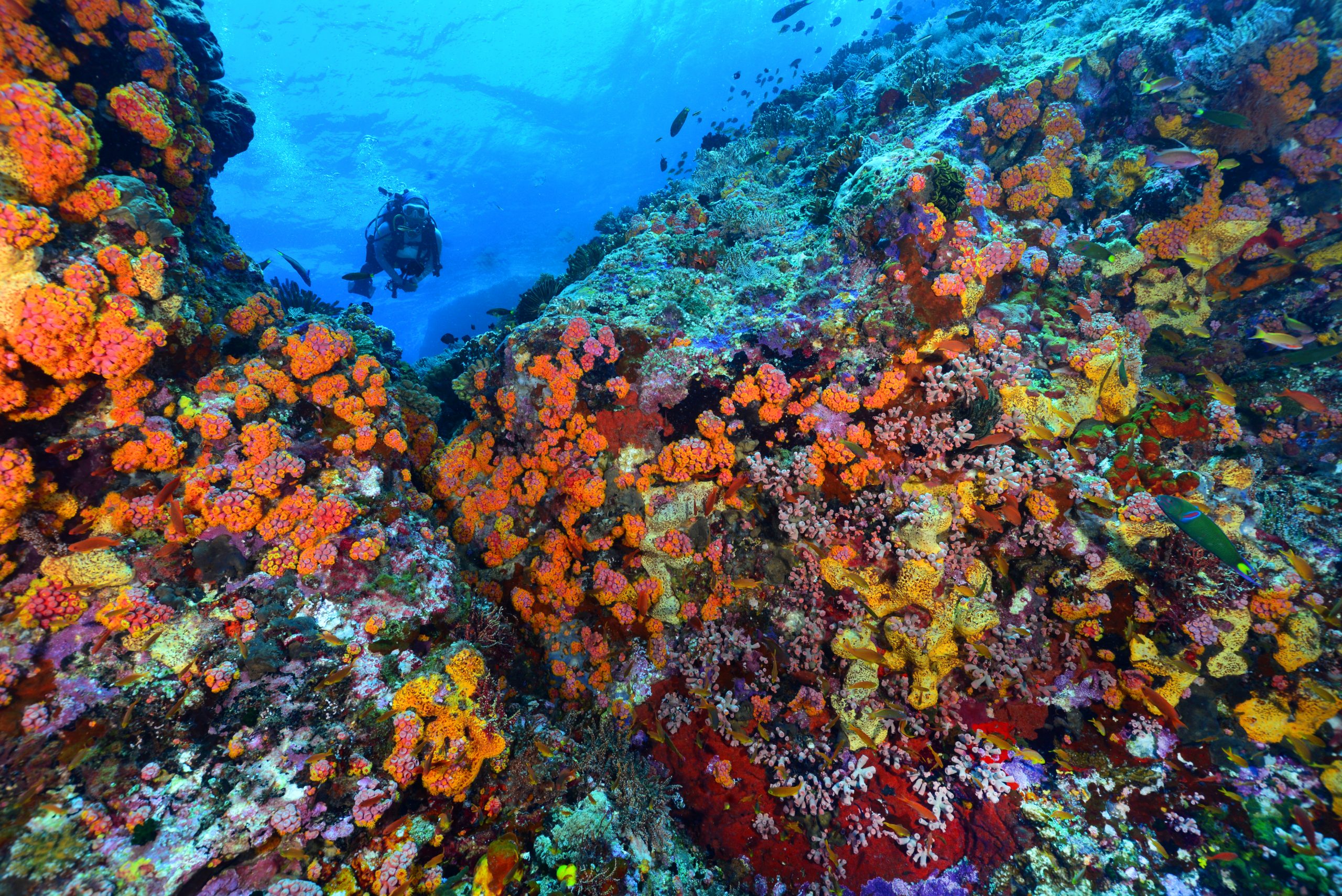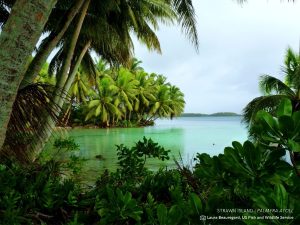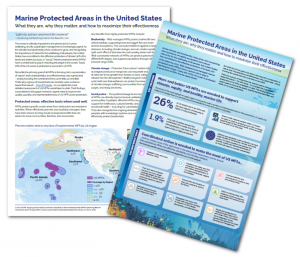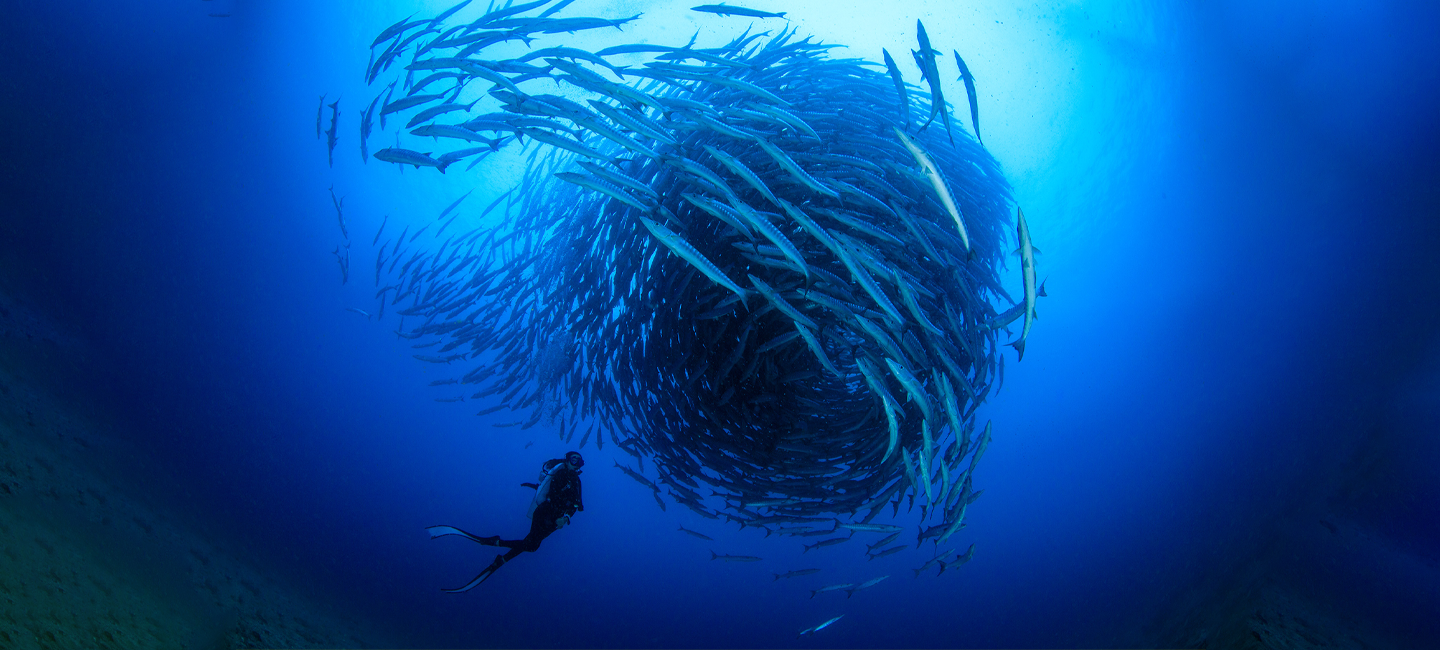30 x 30 — Protecting at least 30% of the ocean by 2030
Today, less than 3% of the global ocean is protected in marine protected areas that have strong enough regulations to safeguard biodiversity. Marine Conservation Institute uses the latest science to guide our mission of protecting at least 30% of the ocean by 2030.

From kelp forests as tall as redwood trees to warm-water sanctuaries where enormous whales give birth, ocean places rival the grandeur and diversity of familiar national parks. Submarine canyons, like Monterey Canyon, are equal to the wonder or the Grand Canyon. Hawaii's northwestern islands are an iconic seascape that shines as bright as Yellowstone National Park. Just as parks on land are held in trust and set aside for the greater good of all citizens, marine protected areas (MPAs) are underwater refuges where the beauty and health of marine ecosystems can be preserved on our quickly changing planet.
Researchclearly demonstrates that MPAs are a simple and effective way to sustain marine biodiversity and build resilience. Marine protection works. Well-managed MPAs can reverse the effects of overfishing, strengthen fragile coral communities, and protect ourselves and our neighbors--locally and globally--from rising sea levels and strengthening storm systems.
At a time of accelerating climate change, dwindling fisheries, and encroaching sea levels that threaten the 3.5 billion people that live in coastal areas, Marine Conservation Institutejoins a chorus of scientistswho advocate for safeguarding the world’s oceans through well-managed Marine Protected Areas. Time is not on our side and there is an urgent need to accelerate protection for at least 30% of the ocean by 2030.
Join us in advocating for 30% protection by 2030. Donate to make our oceans healthier for us and future generations.
Marine Conservation Institute Applauds Biden-Harris Administration Proposed Expansion of Marine Sanctuary Around Pacific Remote Islands Marine National Monument
To truly safeguard marine life and restore our ocean, Biden’s proposed sanctuary around the entirety of the Pacific Remote Islands must provide a high level of protection and eliminate commercial fishing in line with the existing marine national monument.
World Resoundingly Agrees to Protect 30% of the Planet By 2030, Now Comes the Hard Part: Building a Vast, Highly Protected Network of Effectively Managed MPAs By the End of This Decade
© Picture Tobias Zimmer With contributions from Menelas Kosadinos, Beth Pike, Lance Morgan, Russell Moffitt & Jessica MacCarthy Across the globe, governments, NGOs, scientists, conservationists and many others are hailing the conclusion of the Conference of Parties to the Convention on Biological Diversity (CBD COP15) where countries successfully adopted the Kunming-Montreal Global Biodiversity Framework late…
First Time That 50 Largest US Marine Protected Areas Assessed for Effectiveness Using Rigorous Scientific Criteria; Almost 100% of US MPA ‘Eggs’ Are in One Basket in the Central Pacific
Effective Marine Conservation in US Is Not Representative; Most Regions Have Close to Zero Area Effectively Protected [Seattle, Washington, USA, May 18, 2022] One way humanity can harness the ocean to fight climate change and reverse the ongoing crisis in biodiversity and loss of species –though not the only way- is to establish effective marine…
We are at a crucial time for ocean conservation. Key decisions in the near future will set the course for a decade of action which will define the future of the sea. We, the undersigned, call on you to support an ambitious global target through the Convention on Biological Diversity’s Post-2020 Framework, to safeguard at least 30% of the ocean in a network of highly or fully protected, well managed marine protected areas (MPAs) and other effective area-based conservation measures (OECMs) by 2030.
Ocean health is vital to all life on Earth, yet is in a state of decline. Human activities are driving significant overfishingi, the loss of marine biodiversityii, the destruction of coastal environments, pollution of marine habitats and the warming, acidification, and deoxygenation of the ocean, threatening not only marine life, but the wellbeing of people today and into the future. The current target to protect 10% of the ocean by 2020 (codified in the CBD and Sustainable Development Goals), while a good start, is not sufficient to reverse biodiversity loss or help mitigate the impacts of rapid global change.
Scientific evidence suggests that to secure a healthy, productive, and resilient marine environment, at least 30% of the world’s ocean must be safeguarded in a network of well managed MPAs and OECMsiii. It has been shown that protected areas that do not allow industrial extraction such as long-line fishing or deep-sea mining are crucial to restore and protect biodiversity.iv, v, vi
We are inspired by the progress the world has made on ocean protection over the past ten years. At the same time, we note with concern that a number of countries’ submissions to the World Database of Protected Areas (WDPA)vii, the global database used by the United Nations to measure progress against the 10% goal, do not meet minimum international standards, such as those established by the International Union for Conservation of Nature (IUCN)viii, which require the prohibition of industrial extractive activity. These commitments provide little to no biological benefits and give a skewed impression of progress against global ocean protection targets. By some estimates, a third of the area identified as protected in the WDPA does not meet minimum international standards for MPAs. Global conservation efforts are being undermined by accrediting protected areas that do not support the recovery of the ocean. The levels of protection for biodiversity within these sites must quickly be enhanced to render them effective.
Over the coming months and years, it is critical that existing and new ecologically representative protected areas cover at least 30% of the ocean, meet the IUCN’s standards for protected areasix, and are effectively managedx. A high level of protection is necessary for a high level of benefit. This is the only way to secure a sustainable and abundant ocean and to build resilience against emerging threats such as climate change. Marine life and the indigenous people and local communities that depend on the ocean for their food and livelihoods rely on leaders like you to help the world deliver on ambitious ocean protection targets.
We call on you to support a global call to protect and conserve at least 30% of the ocean and to preserve the integrity of the term “marine protected area”. Weakening this standard will not get us to our goal of protecting global ocean health, which is vital to all the people of this world.
i FAO report,“State of the Worlds’ Fisheries and Aquaculture”(2018)
ii IPBES report,“Global Assessment Report on Biodiversity and Ecosystem Services”(2019)
iii Bethan C. O’Leary et al.,“有效覆盖Targets for Ocean Protection,”Conservation Letters 9, no. 6 (2016): 398-404
iv Graham J. Edgar et al.,“全球保护结果取决于海洋专业tected Areas with Five Key Features,”Nature 506, no. 7487 (2014): 216-20
v Sarah E. Lester et al.,“Biological Effects Within No-Take Marine Reserves: A Global Synthesis,”Marine Ecology Progress Series 384 (2009): 33-46
vi安克萨拉et al“Assessing real progress towards effective ocean protection”, Marine Policy Volume 91 (2018): Pages 11-13
viiWorld Database of Protected Areas
viii International Union for Conservation of Nature and World Commission on Protected Areas,“Guidelines for applying the IUCN protected area management categories to marine protected areas”(2019)
ix International Union for Conservation of Nature and World Commission on Protected Areas,“Applying IUCN’s Global Conservation Standards to Marine Protected Areas (MPA)”(2018)
x David Gill et al“Capacity shortfalls hinder the performance of marine protected areas globally”Nature. 30;543(7647) (2017). 665-669




